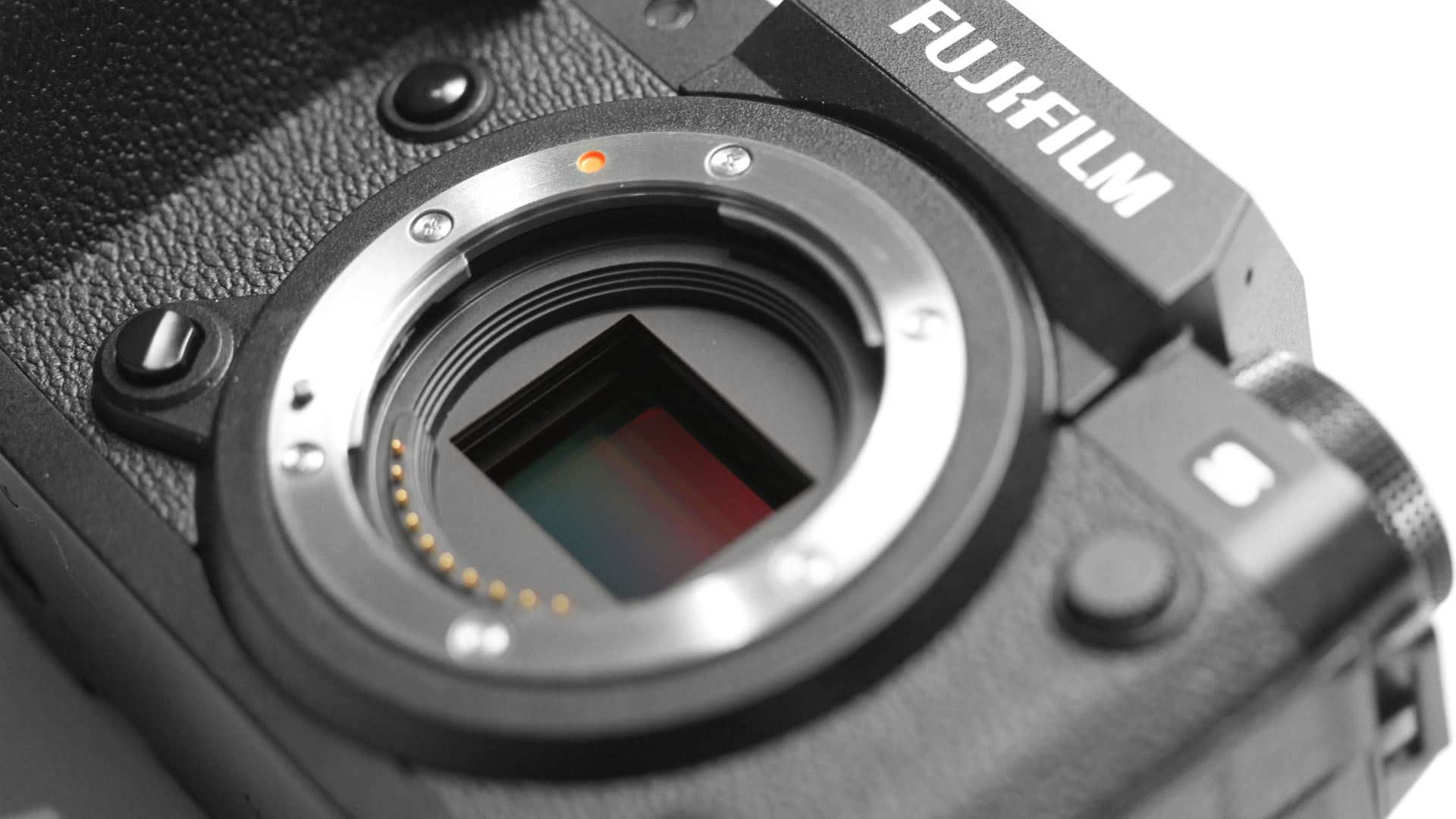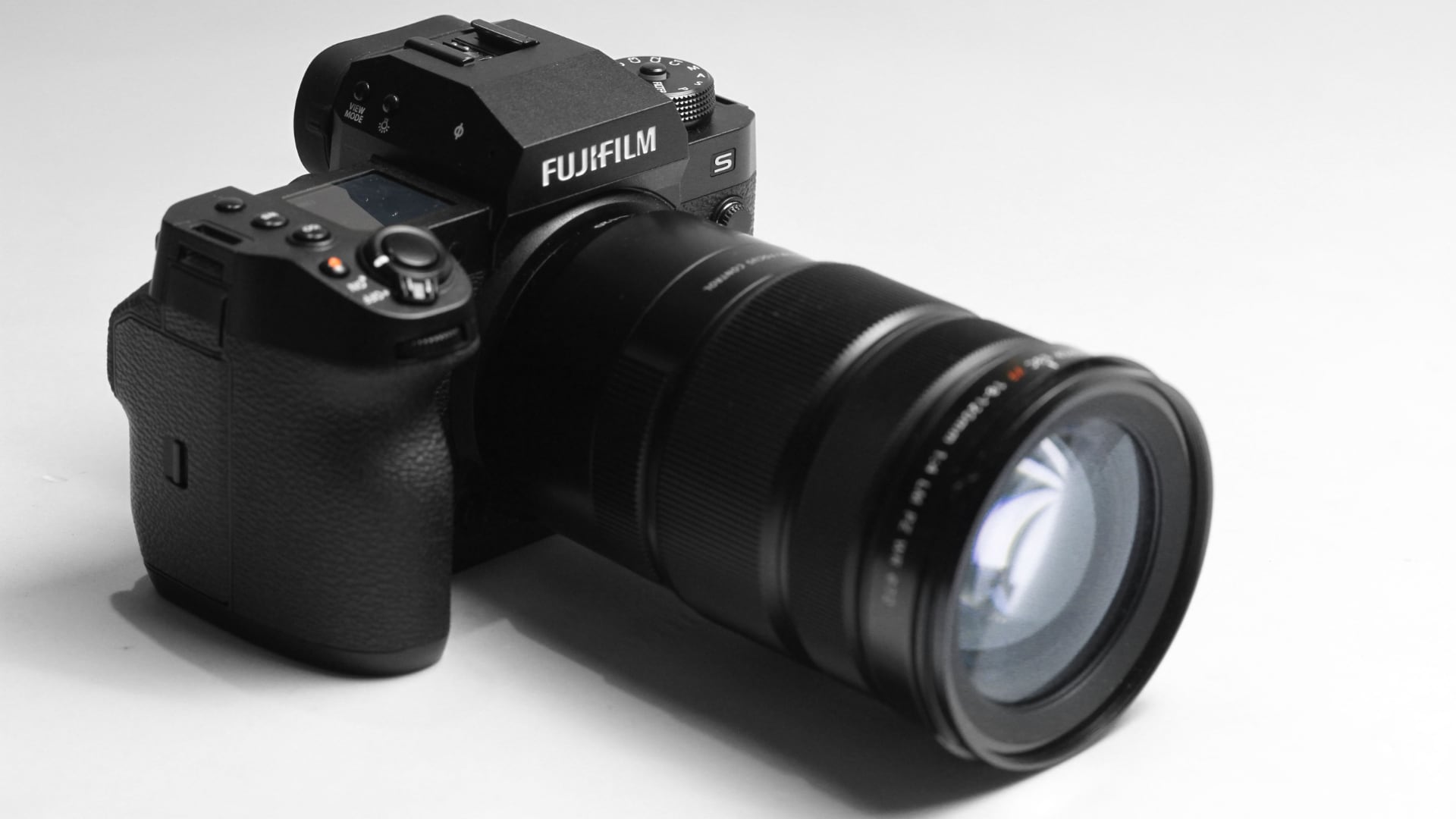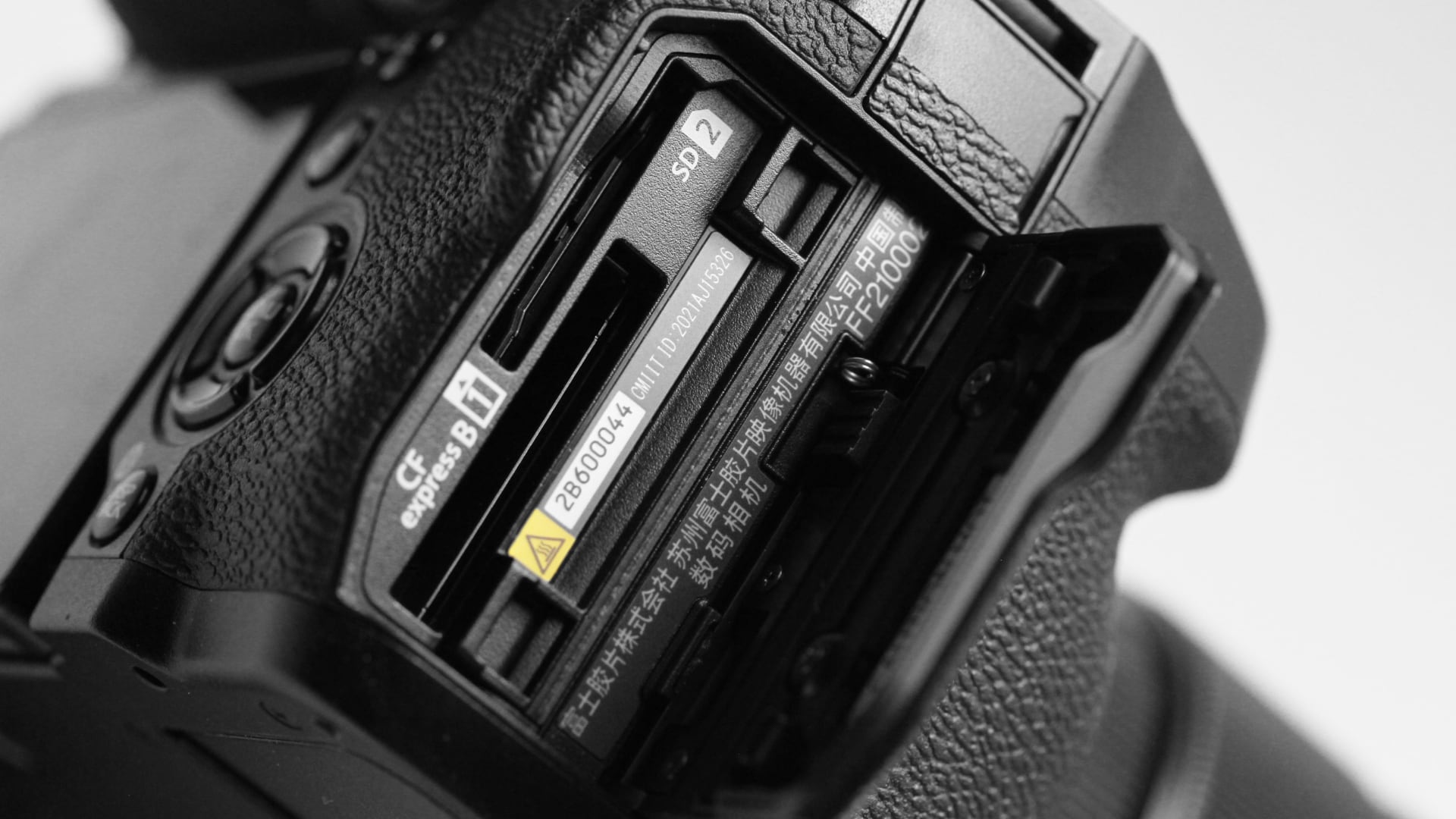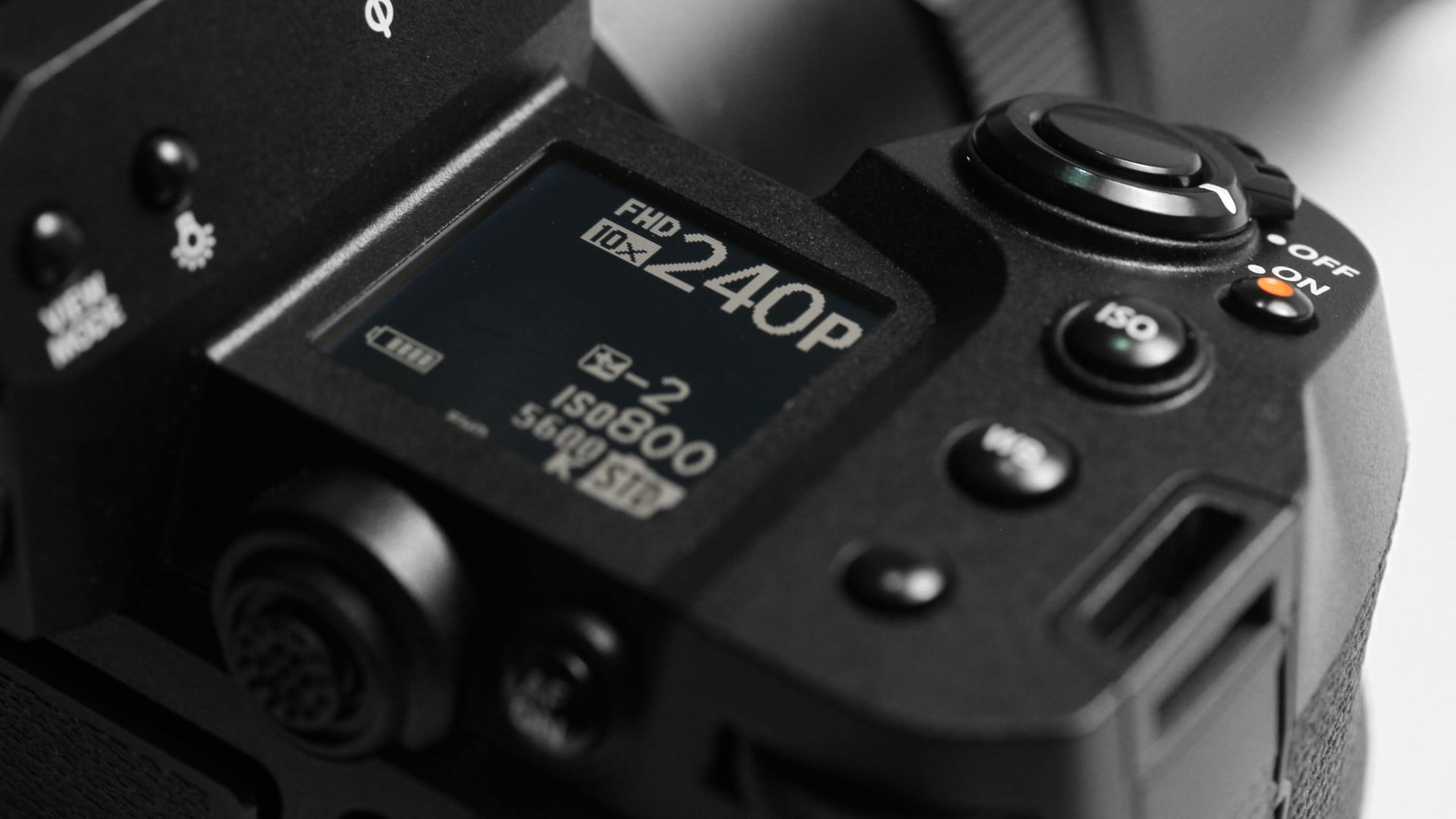
While ostensibly a stills camera, Phil Rhodes finds the Fujifilm X-H2S a better-specified cinema camera than some cinema cameras.
There’s sometimes a feeling that camera manufacturers are being coy about the capabilities they build into cameras. Maybe it’s a sense of holding something back for next year’s model, or an attempt to keep things under wraps pending the release of another, more capable model in the same range. Often, that’s a bit unfair, if only because a camera released in 2022 probably took a couple of years to develop and is therefore best thought of as a 2020 design concept.
Either way, what Fujifilm has done with the X-H2S isn’t likely to be accused of this kind of false modesty, because the successor to the X-H1 is, in some ways, a better-specified cinema camera than some cinema cameras. Of course, in the first instance, it’s really a stills camera, and the specifications are encouraging there too.

APS-C
To the relief of focus pullers everywhere, it’s an APS-C device, with Fujifilm’s own X mount. Said mount has a flange focal distance of 17.7mm, which is less than a lot of things – less even than Sony’s E-mount, although only by 0.3mm, so it likely won’t ever be possible to adapt Sony lenses to Fujifilm cameras. That’s about the only common lens mount that isn’t at least mechanically compatible, though, and more or less anything else that’s ever been designed to lob photons at a sensor could conceivably be adapted to suit.
The sensor itself has all the stacking and backside illumination we’d expect in an ambitious modern design. We’re long past the point of resolution as a meaningful metric of sensor performance, but at a shade over 26 megapixels it’s sensibly midrange – less than Canon’s EOS R7, at 32.5, but more than the nearly-21 of a Nikon D500. The dimensions of the X-H2S’s sensor are relevant in that its video modes can create stupendously useful 13-megapixel, 6.2K-wide 3:2 images which read the entire area of the sensor.
Fujifilm’s claim is that its X-Trans sensor layout, which uses a larger preponderance of green-filtered photosites than a traditional Bayer design, has better performance in some specific ways than the more common approach. Frankly, a lot of claims have been made about non-Bayer sensor layouts and the differences have very often been shrug-worthy; they’re generally better at some things and not better at others. It’s very difficult to objectively test this sort of thing and as a video camera the way in which the 26MP sensor is turned into a 13MP video image is likely to have more impact on aliasing than the colour filter array. It seems to alias less than the X-T4 we considered back in 2020, though that, too, has the green-heavy photosite layout.

SD and CFExpress options are supported
Sensor speed = fast
Perhaps most notably, though, the sensor is fast. Again, it’s hard to give numbers, but the X-T4 is pretty quiet. The X-H2S seems quieter still, possibly because it has four analogue-to-digital converters on its sensor to the X-T4’s two. The two sensors have broadly similar resolution and converters which can take their time tend to enjoy reduced noise. Things seem better by perhaps a stop, and it’s tempting to do the maths: double the number of converters, half the amount of noise? Perhaps there are too many assumptions involved to make that sort of calculation really relevant, but that’s what it looks like.
There are other things we could discuss about the sensor – how it’s mounted in a vibration-counteracting mechanical assembly to provide in-body image stabilisation, or how the multi-layered technology might contribute a little more sensitivity and noise reduction. There’s a new F-Log2 mode in which the base ISO becomes 1250, with several LUT options for monitoring and (if you want to bake in a look) recording, named after Fujifilm’s own line of photochemical film stocks and associated processes. This is a nice idea that stills people seem to like while cinema people, with a few exceptions, have generally eschewed.
The selection of looks seems more useful than those offered by other manufacturers. Some camera manufacturers seem dedicated to at least some presets which ensure every frame has some nice, clean, solid white and some nice, clean, solid black, producing images which can fairly be described as – well – crunchy, and not like crunchy like breakfast cereal. Crunchy like chewing on a handful of nuts and bolts. Conversely, Fujifilm’s presets are largely in pretty good taste, particularly the classic chrome setting which does what it sounds like.
Codecs for a camera like this are an engineering compromise. Use a clever codec, and the torrent of data produced by such a capable imager are easier to store. Get too clever, and the digital signal processing required to handle all those pixels becomes a problem in terms of cost, heat and power consumption. The X-H2S puts this choice in our hands by offering us all the options. For really mastering-quality material, we can store 6.2K as 10-bit ProRes 422 HQ, 422 or LT, or as 10-bit H.265, on Type B CFExpress cards. Alternatively, UHS-II SD cards support modes with more compression. The X-H2S will record 60p 4K in ProRes, though anything faster than that must be H.265 or H.264.
The X-H2S’s sensor has a really enormous amount of capability, producing that 6.2K video at up to 30 frames, and a somewhat cropped 4K at 120. Remember when 4K modes often used to run out of steam at 60p? It’ll do a DCI 4K crop from the full sensor width, as well as an HD crop up to 240 frames. And, yes, all of this does create some heat, and the result is probably a feature of the X-H2S that’s already fairly well-known – there’s a $200 bolt-on fan module, though brief experience suggests it’s only likely to be required for long takes in extreme environments.

That is a lot of frames...
A worthy competitor
So, is this the location thief’s ideal camera, capable of filling the biggest screens while remaining reasonably incognito? Probably. The pictures are very high in resolution and while Fujifilm suggests the X-Trans layout avoids the need for optical low-pass filtering, results do benefit from what we might cautiously refer to as optical excess detail remediation. Slip a mild diffusion into the mattebox and watch it go. It’s also perfectly suited to duty as an imaging block at the core of a bigger rig.
It’s not so much a quart in a pint pot as an ocean-going oil tankerload of pixels in a pint pot, and the £2500 price tag, while steep for APS-C, seems somewhat justified. Cameras like this are inevitably designed to meet an anticipated market, to meet competitors the company reasonably expects to exist at the time of release. If the X-H2S represents Fujifilm’s estimation of what it needed to do well in the mid-2022 market, well, it was clearly expecting the mid-2022 market to be full of very competitive technology.
Tags: Production


Comments